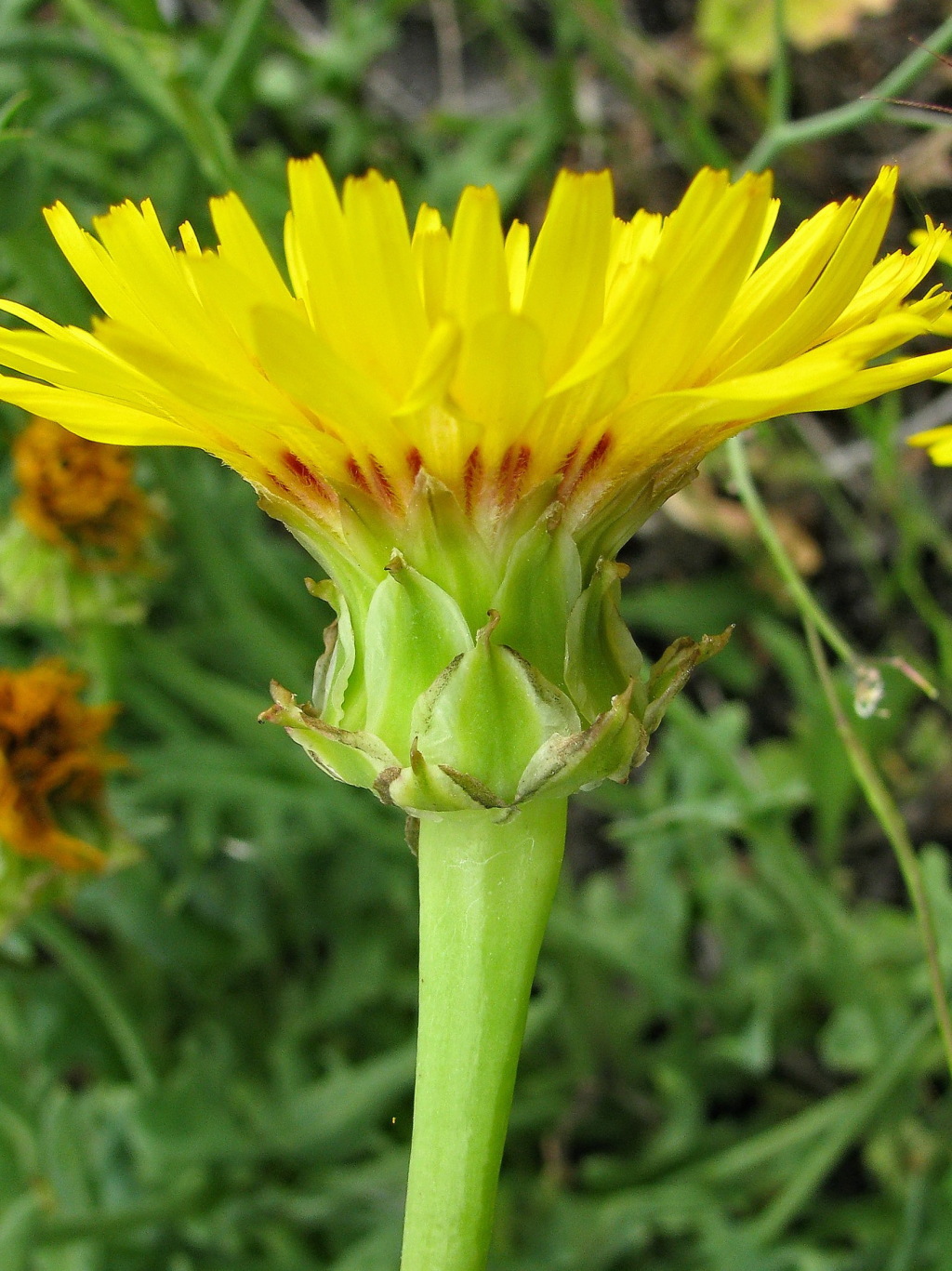Reichardia tingitana
(L.) Roth ReichardiaUsually annual, 10–70 cm high. Leaves fleshy, margins minutely prickly, glabrous, often glaucous; basal leaves oblanceolate in outline, 2–17 cm long, 0.5–7 cm wide, entire to pinnatifid, acute or obtuse, base narrowed into a short broadly winged petiole; cauline leaves broad-lanceolate, 2–10 cm long, to c. 2 cm wide, acute, margins entire to toothed. Capitula 25–40 mm diam.; peduncle inflated below capitulum, with 1 or 2 small ovate bracts; involucral bracts 4–15 mm long; outer bracts shortest, with wide scarious margins and a small dark terminal appendage. Florets yellow with purplish base, the outer ones red-striped; ligules 16–20 mm long. Cypselas 1.5–3 mm long; pappus 7–9 mm long, white, deciduous. Flowers throughout the year (mainly Aug.–Nov.).
LoM, MuM, Wim, VRiv, MSB, RobP, MuF, GipP, OtP. Also naturalised WA, SA, NSW. Native to the Mediterranean region. Apart from an isolated occurrence at Queenscliff on the Bellarine Peninsula, apparently confined in Victoria to semi-arid habitats of the north-west, usually growing on sand.
Jeanes, J.A. (1999). Asteraceae. In: Walsh, N.G.; Entwisle, T.J., Flora of Victoria Vol. 4, Cornaceae to Asteraceae, pp. 652–666. Inkata Press, Melbourne.
 Spinning
Spinning



